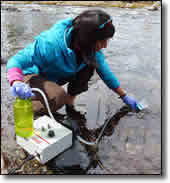Related WebsitesNorWeST: Regional Database & Modeled Stream Temperature SSN & STARS: Tools for Spatial Statistical Modeling on Stream Networks Climate Shield Cold-Water Refuge Streams for Native Trout Stream Temperature Modeling and Monitoring U.S. Stream Flow Metric Dataset National Genomics Center for Wildlife and Fish Conservation Sculpins of the West - A molecular taxonomy of Cottus in western North America The Range-Wide Bull Trout eDNA Project Cutthroat trout-rainbow trout hybridization
| |||||||||||||||||||||||||||






